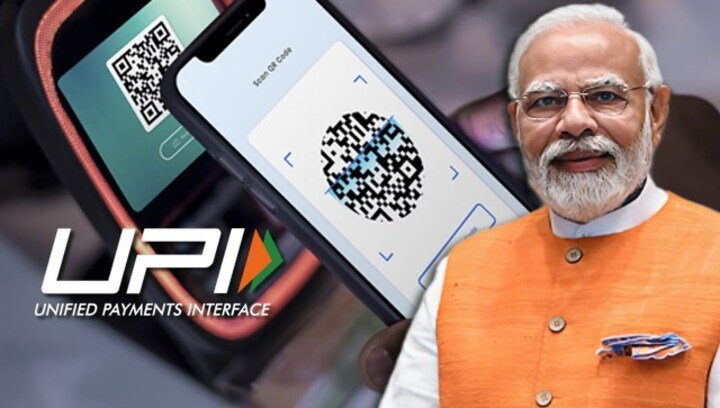Summary:
- UPI now accounts for 50% of global real-time digital payments, with 185 billion transactions in FY25.
- Platforms like PhonePe and Google Pay dominate, controlling over 80% of UPI traffic.
- Despite explosive growth, monthly transaction gains are decelerating, and fraud cases are rising.
- A push for global expansion and debates over reintroducing merchant fees underscore the ecosystem’s growing pains.
In 2016, when India’s Unified Payments Interface (UPI) was launched, few imagined that within a decade it would become the world’s most used digital payment system. Today, in 2025, UPI is processing over 50% of all global real-time digital transactions, according to the National Payments Corporation of India (NPCI) and industry trackers.
India’s UPI isn’t just a financial tool—it’s a social re-engineering. With over 185 billion transactions valued at ₹260 lakh crore in FY2024–25, the platform has embedded itself in the country’s daily rhythm—from street vendors and vegetable carts to luxury retailers and utility billers.
This financial infrastructure revolution has been executed with no fees, no friction, and virtually no borders.
The Platform Powerhouses: PhonePe and Google Pay Rule the Rails
At the center of UPI’s dominance are two consumer-facing titans—PhonePe and Google Pay. Together, they control more than 80% of UPI transaction volume and value, with PhonePe alone recording nearly ₹12.56 lakh crore across 8.7 billion transactions in May 2025.
These platforms have succeeded not because of exclusivity or ad blitzes—but by embedding themselves in everyday life. From cashback micro-rewards to seamless in-store QR codes, they’ve made digital payments feel intuitive—even addictive.
Meanwhile, the NPCI has halved UPI response times through backend upgrades, reducing transaction processing to just 10–15 seconds, compared to 30 seconds a year ago.
Smooth on the Surface, Strained Beneath
Despite its triumphs, cracks are beginning to show.
1. Slowing Growth:
UPI’s month-on-month transaction increases, once hovering around 35–40%, are now settling at 25–28%. Experts call this a “normalization phase” as the system saturates in urban areas.
2. Fraud is Rising:
As digital familiarity spreads, so do scams. QR-code spoofing, phishing, and fake loan app links have led to a surge in fraud. The Reserve Bank of India recently warned that UPI-related fraud complaints rose over 38% year-on-year. Cyber literacy is still catching up with fintech acceleration.
3. Sustainability Debate – Should It Be Free Forever?
The elephant in the room is the zero-cost model. Payment platforms and banks earn little to nothing on UPI transfers. While the government has so far avoided levying a Merchant Discount Rate (MDR), industry leaders like PhonePe and Paytm warn that this is unsustainable in the long term.
Case in Point: Suresh’s Teashop, a Microcosm of Digital India
Suresh Rao, a tea seller in Vijayawada, doesn’t have a smartphone. But his daughter set up a QR code linked to a PhonePe wallet. Today, 90% of his customers pay digitally.
“People trust me more when I accept UPI,” he says. “And I don’t have to worry about change or theft.”
Last Diwali, he almost lost ₹9,000 to a phishing link pretending to be a cashback offer. He reported it quickly—and his bank froze the transaction just in time. The experience left him wary, but not deterred.
“I tell others now—only scan what you see. Don’t click what you get.”
Suresh’s story is UPI’s story: inclusive, transformative, but vulnerable.
The World Watches—and Joins In
With the domestic system now matured, India is turning outward. UPI has signed cross-border linkages with Singapore, UAE, Nepal, France, and Bhutan, among others, aiming to become a credible alternative to Visa and Mastercard for the Global South.
These agreements allow Indians traveling abroad—or foreign residents in India—to transact through their native UPI apps, creating a soft-power corridor of digital finance.
Still, international traction depends on one thing: trust—in security, stability, and regulatory clarity.
A Platform Bigger Than Policy
India’s UPI is no longer just a fintech success—it’s a public utility, an enabler of dignity, and a quiet geopolitical lever.
But like any infrastructure, it will require upkeep, education, and evolution. As the government balances free access with commercial viability, and as the NPCI fends off scalability and fraud concerns, the next five years will define whether UPI can remain the crown jewel of India’s digital revolution—or become a cautionary tale of unchecked growth.
In a world where every tap counts, UPI’s challenge now is to protect what it built—without losing what made it magical.



